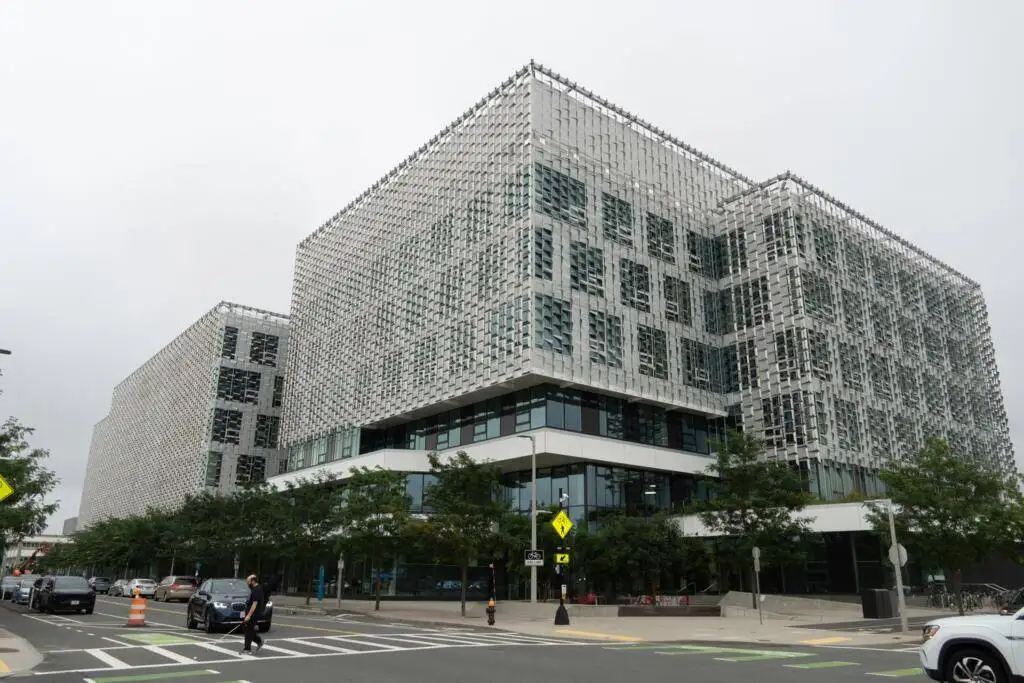The National Academy of Sciences awarded Harvard professor Jennifer A. Lewis the 2025 James Prize in Science and Technology Integration last week. The $50,000 award honors interdisciplinary sciences and Lewis’ remarkable contributions in living materials science that have far-ranging applications in bioprinting, a revolutionary field that combines engineering, biology, and materials science to create structures using biological materials. This prestigious recognition not only highlights her achievements but also underscores the significance of collaborative approaches in advancing scientific frontiers.
Lewis’ seminal work at the John A. Paulson School of Engineering and Applied Sciences focuses on functional materials — specifically the ability to use ink to 3D print biological materials such as human blood vessels and cells. This innovative approach has the potential to transform medical practices, allowing for personalized medical solutions that can be tailored to individual patients. By developing inks that can mimic the properties of living tissues, Lewis and her team are paving the way for new treatment options in regenerative medicine.
Mustafa Abdelrahman, a postdoctoral researcher working under Lewis, said the prize is “definitely well deserved.” He emphasized how the recognition reflects Lewis’ commitment to pushing the boundaries of science and her dedication to mentoring the next generation of scientists. Her influence extends beyond her own research, as she actively fosters an environment that encourages innovative thinking and collaboration among her students and colleagues.
“Her work is multi-disciplinary, and it always makes an impact, and just from the way that she views and tackles scientific problems, it comes with that spirit of doing something new and doing something great,” Abdelrahman said. This perspective not only enhances her research but also inspires those around her to adopt a similar approach, fostering a culture of creativity and innovation within her lab and beyond.
Lewis first arrived at Harvard in 2013, before creating a new method of 3D printing that became the gold standard in various industries. One year later, she founded Voxel8 — an additive manufacturing company and 3D-printing platform — and sold it to the Israeli company Kornit Digital in 2021. She is also the co-founder of Electroninks, Inc., a company that produces silver ink for printed electronic circuitry. Each of these ventures reflects her commitment to bridging the gap between theoretical research and practical applications, ensuring that scientific advancements benefit society at large.
Travis A. Busbee, co-founder of Voxel8 and one of Lewis’ first students at Harvard, said that “it’s been incredible to watch Jennifer’s progress in research.” Lewis, who heads a lab focusing on printing soft and living matter across multiple mediums, led the creation of the world’s first 3D-printed battery in 2013. This groundbreaking achievement exemplifies her innovative thinking and determination, showcasing how her work not only influences academic circles but also has the potential to revolutionize industries such as energy storage and electronics.
“She recognizes the value of translating these ideas in the lab into the real world where the rubber meets the road, and because that’s such an important justification of the research in the lab,” Bushee said. This translation of research into practical applications is a hallmark of Lewis’ work, illustrating her belief that scientific discoveries should not remain confined to academic journals but should instead serve to address real-world challenges and improve lives.
Her work in the lab has brought together researchers from various disciplines. Brandon R. Clark, a postdoctoral researcher, called the lab a “mecca for interdisciplinary scientists.” This collaborative environment not only fosters innovation but also encourages the exchange of ideas that can lead to unexpected breakthroughs. By promoting teamwork among chemists, engineers, and biologists, Lewis has cultivated a space where diverse perspectives can thrive and lead to impactful scientific discoveries.
“She’s standing at the head of her nest,” Clark said. “You couldn’t do the kind of stuff we’re doing in our lab without all those conflicting viewpoints and having somebody at the helm of it all who can take all those different lines of thought and tie them up neatly into cohesive projects.” This ability to synthesize diverse ideas into coherent strategies is crucial for advancing scientific research and ensuring that all voices are heard in the collaborative process, ultimately leading to more robust and innovative outcomes.
In addition to her slate of teaching courses and research, Lewis is also a member of the American Academy of Arts and Sciences, the National Academy of Engineering, and the National Academy of Sciences. Her involvement in these prestigious organizations showcases her commitment to advancing science and engineering, while also providing her with platforms to influence policy and promote scientific literacy and equity in research opportunities.
“The thing that has made her the most successful is her ambition,” Busbee said. “Regardless of whether or not it’s in her comfort zone, she jumps in and knows that she has the skills and the people around her to take on any challenge.” This ambition drives her to continuously seek new knowledge and experiences, which in turn inspires her students and colleagues to strive for excellence and to embrace challenges in their own careers.
“And that confidence to conquer the unknown is contagious,” he added. It reflects the positive environment she has cultivated, where risks are encouraged, and failures are viewed as learning opportunities. This ethos not only benefits her immediate research group but also contributes to a broader culture of innovation within the scientific community as a whole.
In conclusion, Jennifer A. Lewis’s groundbreaking contributions to bioprinting and living materials science exemplify the potential of interdisciplinary research to address complex scientific challenges. Her recognition with the James Prize not only honors her achievements but also highlights the importance of collaboration and innovation in advancing science and technology. As she continues to inspire future generations of scientists, her work serves as a testament to the transformative power of dedicated research and its ability to impact society positively.
Furthermore, Lewis’ work is not only limited to academia; she frequently engages with industry leaders and policymakers to discuss the implications of her research. By advocating for the importance of bioprinting and its potential applications in healthcare, she plays a vital role in shaping future policies and investments in science and technology. Her efforts to bridge the gap between academia and industry serve to enhance the impact of her work and promote the advancement of bioprinting technologies.


